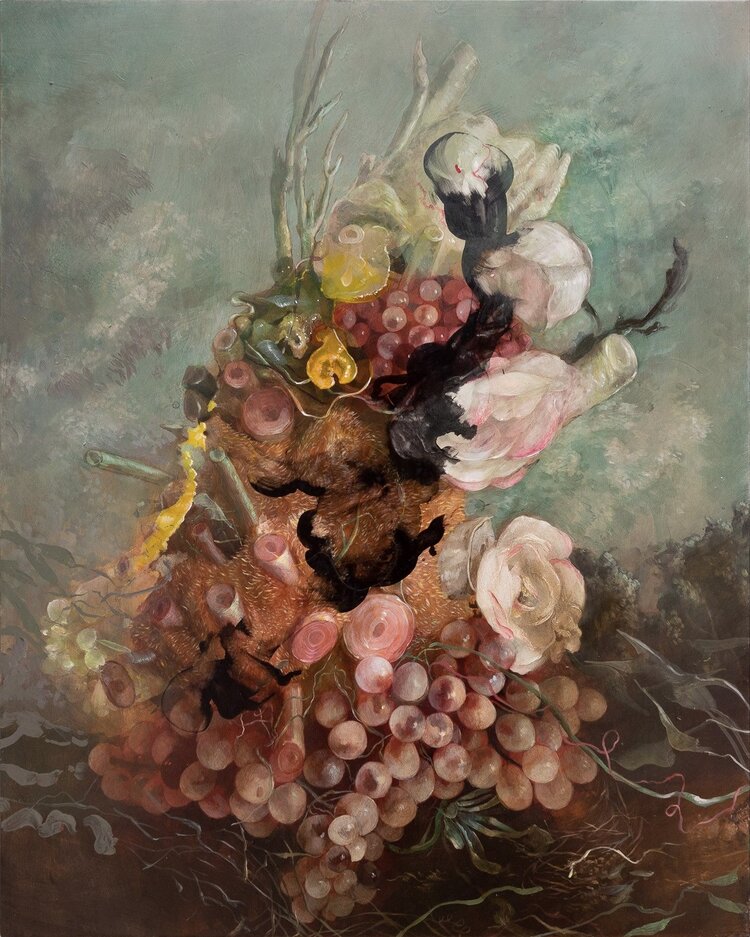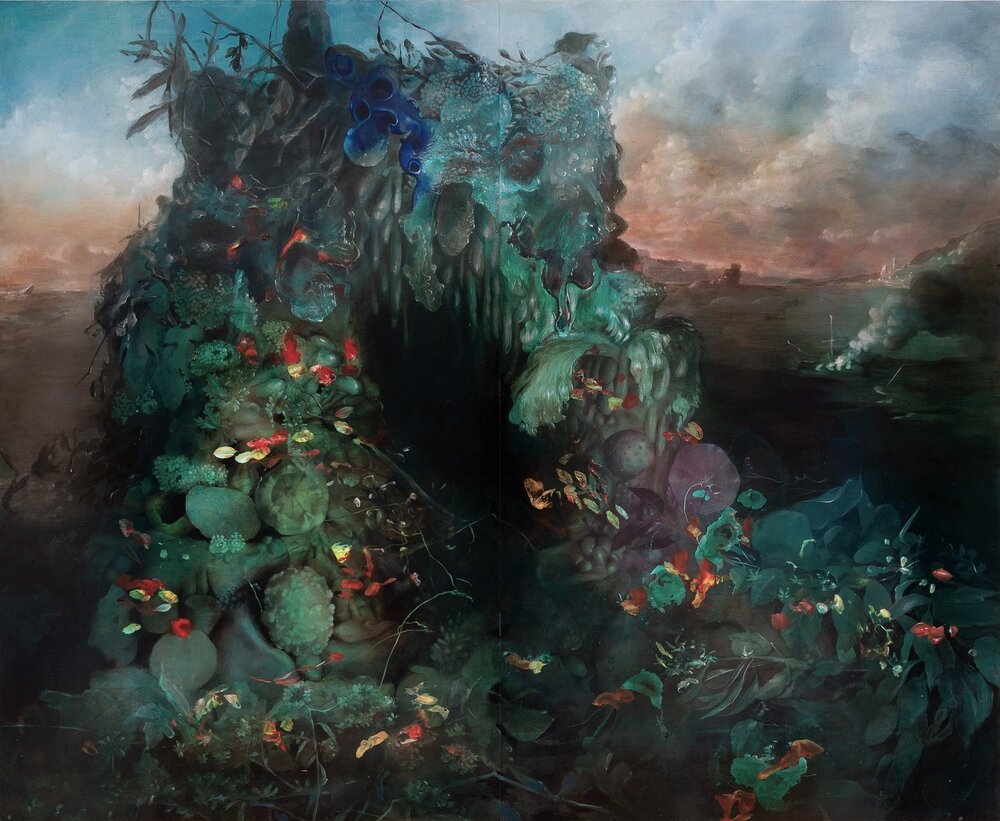b
Ruffs, Pearls, & Rotten First-Fruits: The Art of Nicole Duennebier
The marvelously vibrant works of Nicole Duennebier remind me of a heavenly amalgamation of 17th- and 18th-century aristocratic portraits, vanitas still lifes, and biological illustrations of mysterious deep-sea creatures or perhaps microscopic entities. These complex arrangements are both glisteningly corporeal and abstract, evoking the opaline, viscous translucency of internal organs, at the same time as they cluster in formations seemingly impossible to this earth. They appear to represent a combination of vegetable, organic, and mystical matter. With intriguing titles like Floral Hex and Out of the Strong Came Forth Sweetness, her series of remarkable paintings present “hybrid images that resemble Baroque still lifes, coral, fur, crystals and close-ups of microscopic fauna,” as well as “chandeliers of polyps, spores, and puss, glowing, growing, oozing, dripping…with hundreds of strands of delectable tiny spheres, tangling and cascading…”
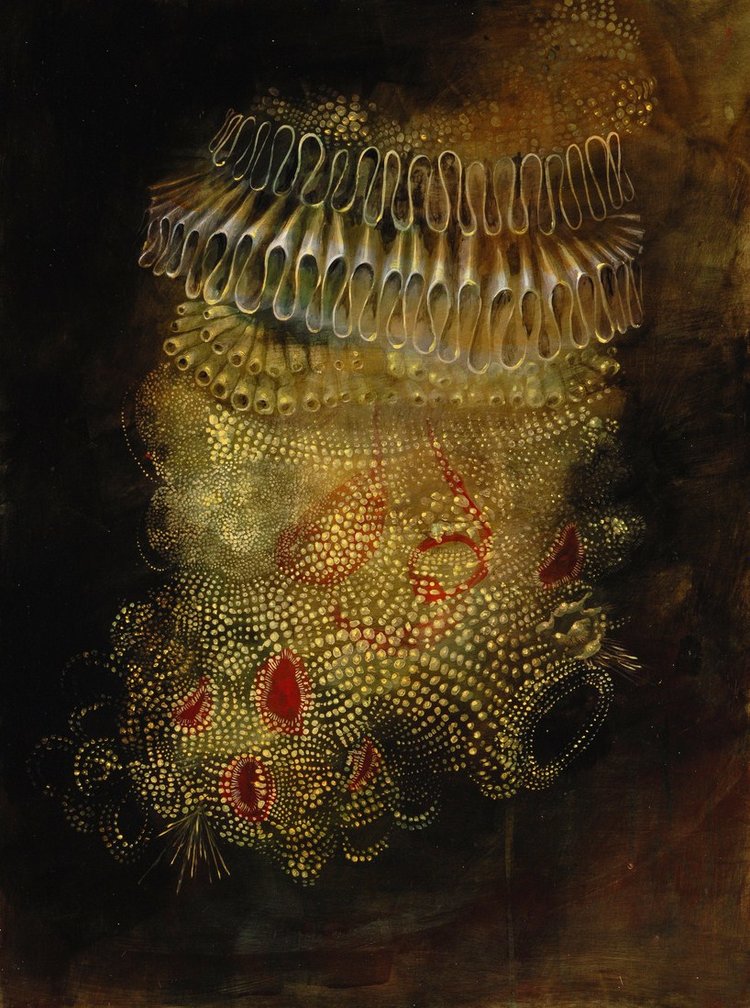
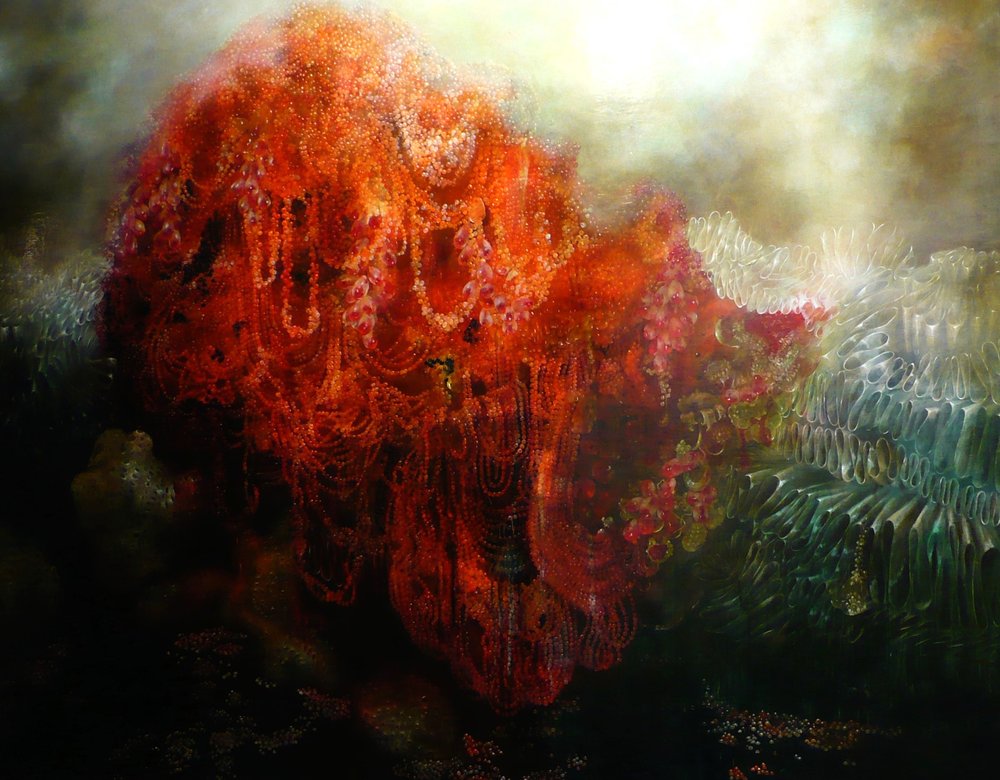
Grapes and pearls are visible in beautiful shimmering dimensions of color, reminding me of the tempting bloom on the exquisitely painted fruit in antique still lifes. Ruffled formations abound, resembling the stiff ruffs and elaborate vestiture of a bygone era. With her classical, masterly style, Duennebier creates a world of fascinating, alluring, corrupt, repulsive, alien, and divine organisms and systems. They are invested with the otherworldly light of the Old Masters, while depicting ungodly combinations, things that ought not to be contemplated too closely. The fantastic forms emerging from the dark void of the background are sui generis, bursting forth in a profusion of incandescent textures and transparent layers.
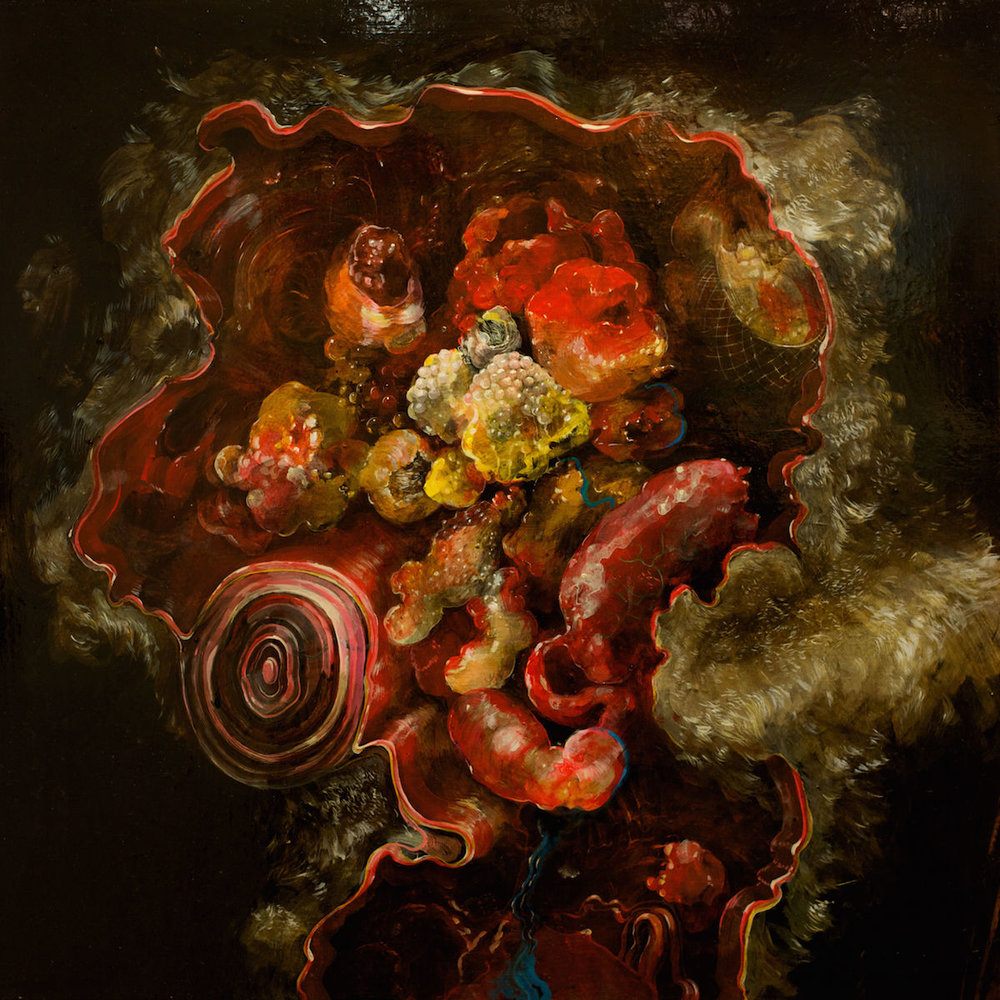
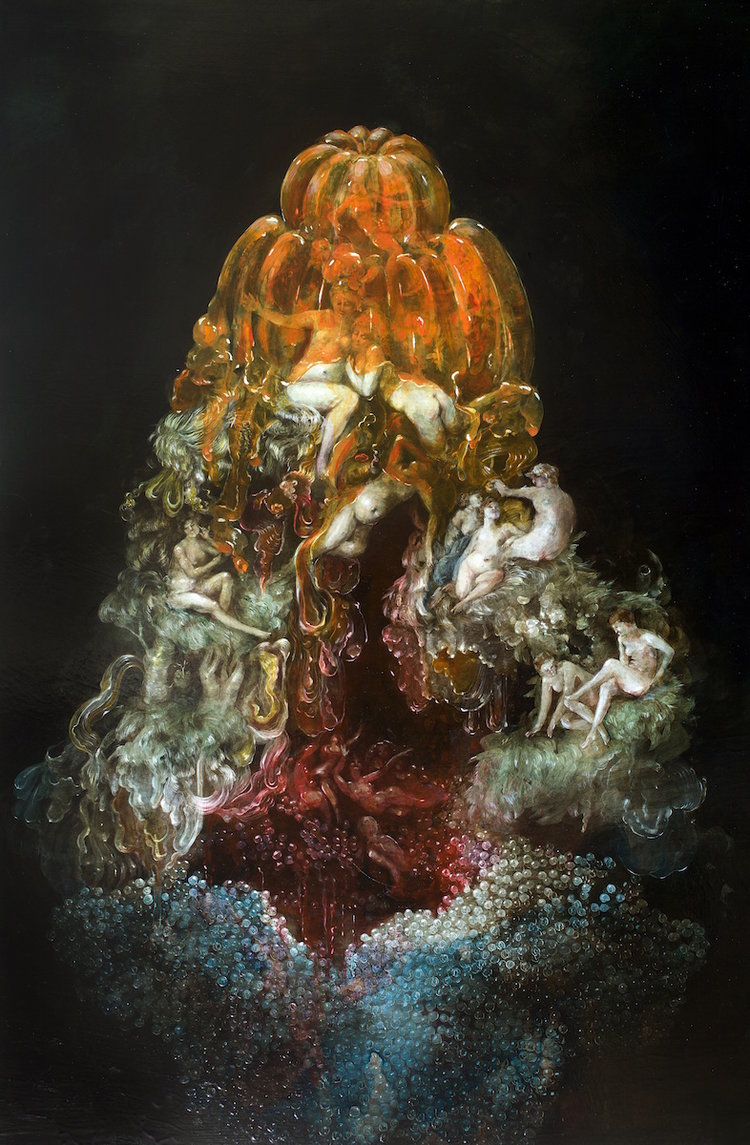
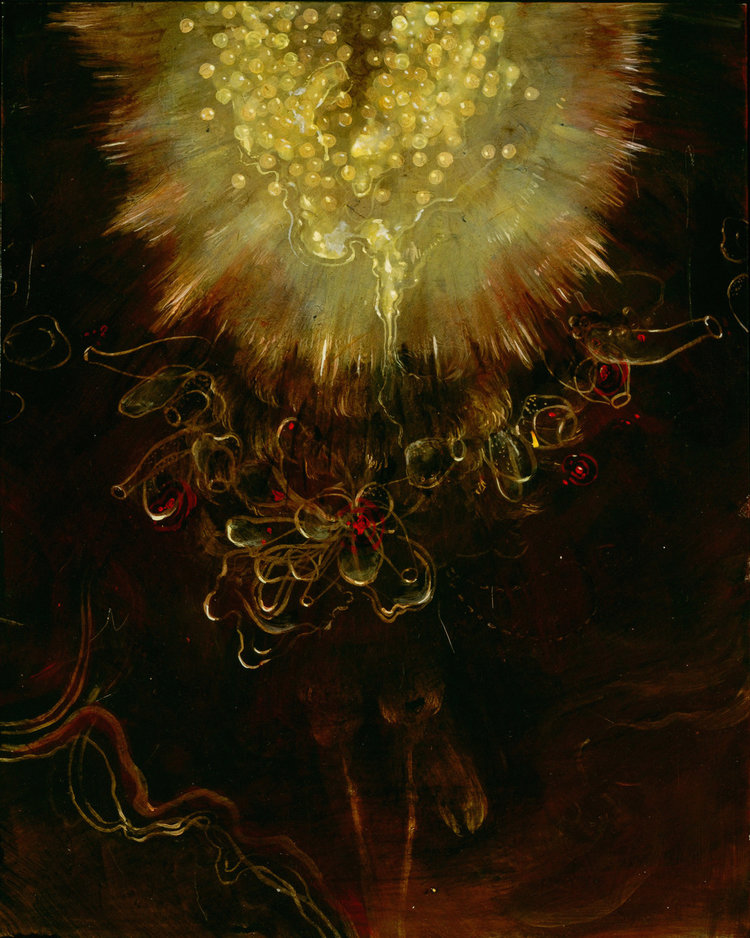
As the artist statement on her Website elaborates:
Natural phenomenon—dermoid cysts, fungus, invasive flora/fauna—and my love of candied, old-master opulence have a constant presence in my work….I’ve become accustomed to the fact that nature itself, or anything living really, never totally allows you to have a perfectly idealized experience. Everything is always spewing, dripping, rotting a little. Similar to 17th century still-life paintings with those vibrant lusty fruits that show the light fuzz of beginning decay, I don’t see these works as allegorical depictions. To me it is more the realization that both the rot and the fruit are a textural attraction in their delicacy…
The classic chiaroscuro darkness in still-life is a primordial soup, a pool of black that springs forth a decadent, and sometimes horrible, growth. I’ve always been attracted to the obsolete idea of spontaneous generation, all that awful stuff popping into existence for no reason. The paintings reflect this; they are more spontaneous generations than firmly rooted in actual living organisms.
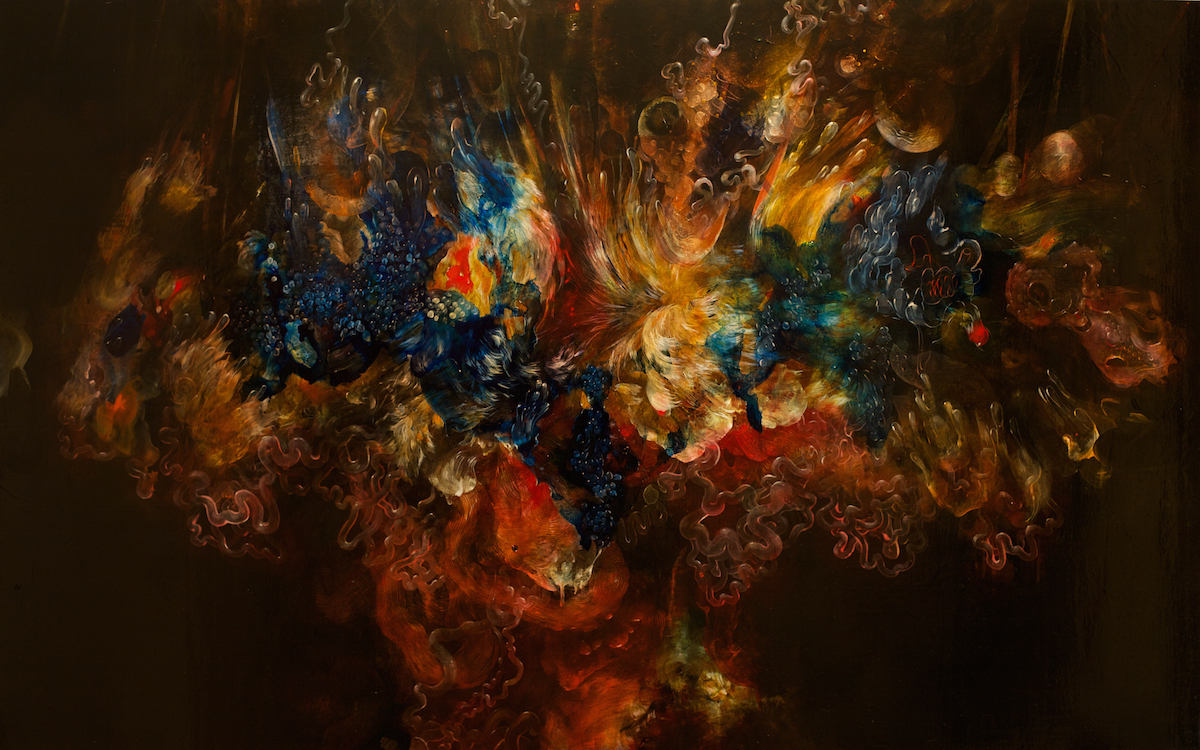
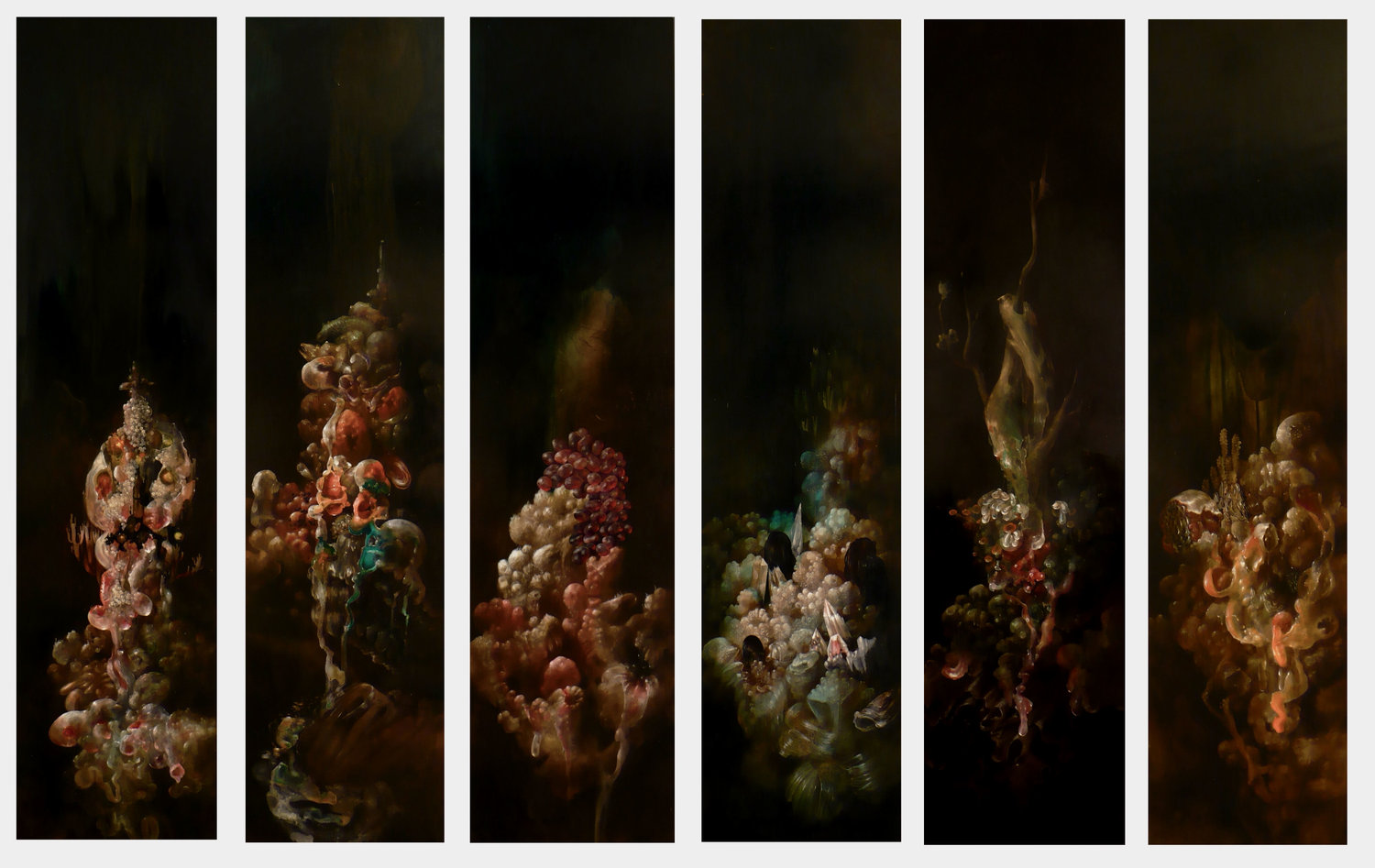
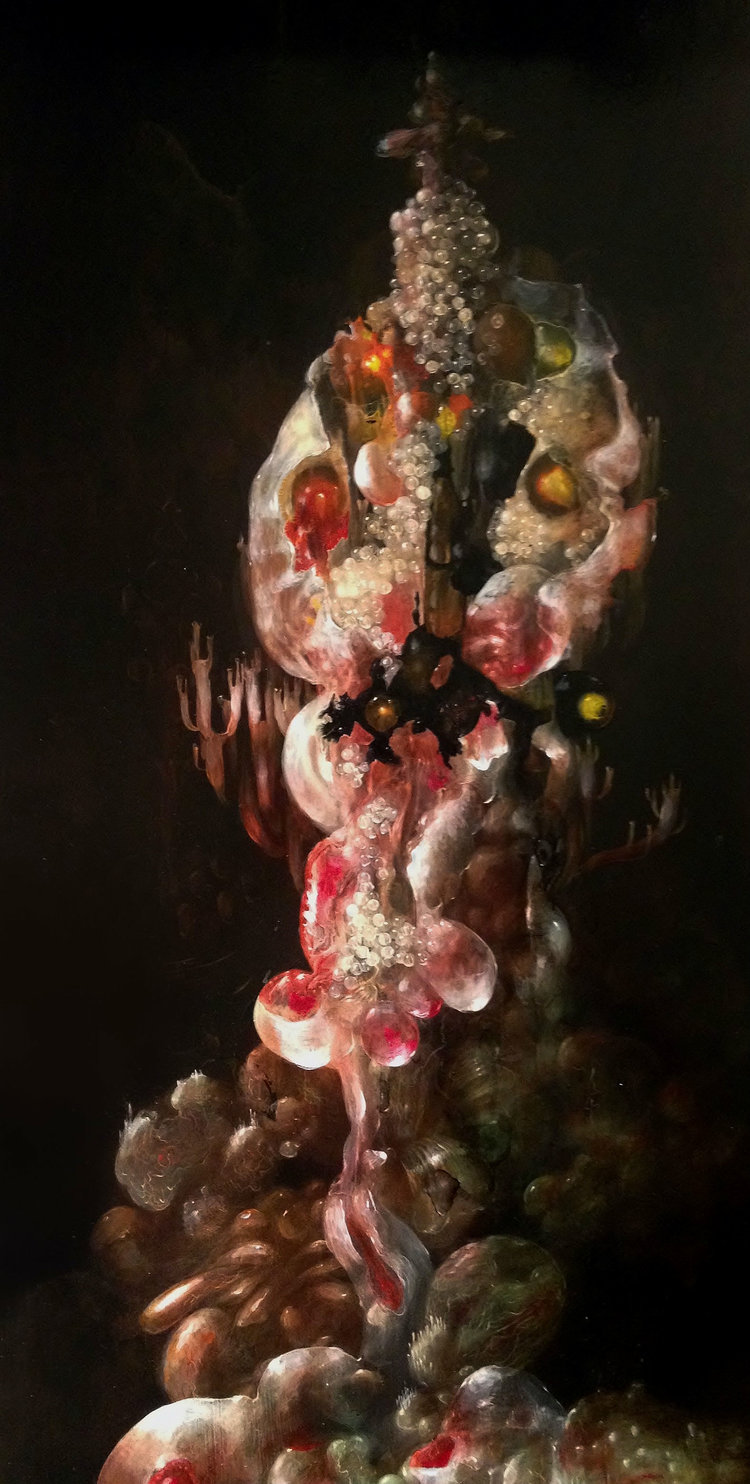
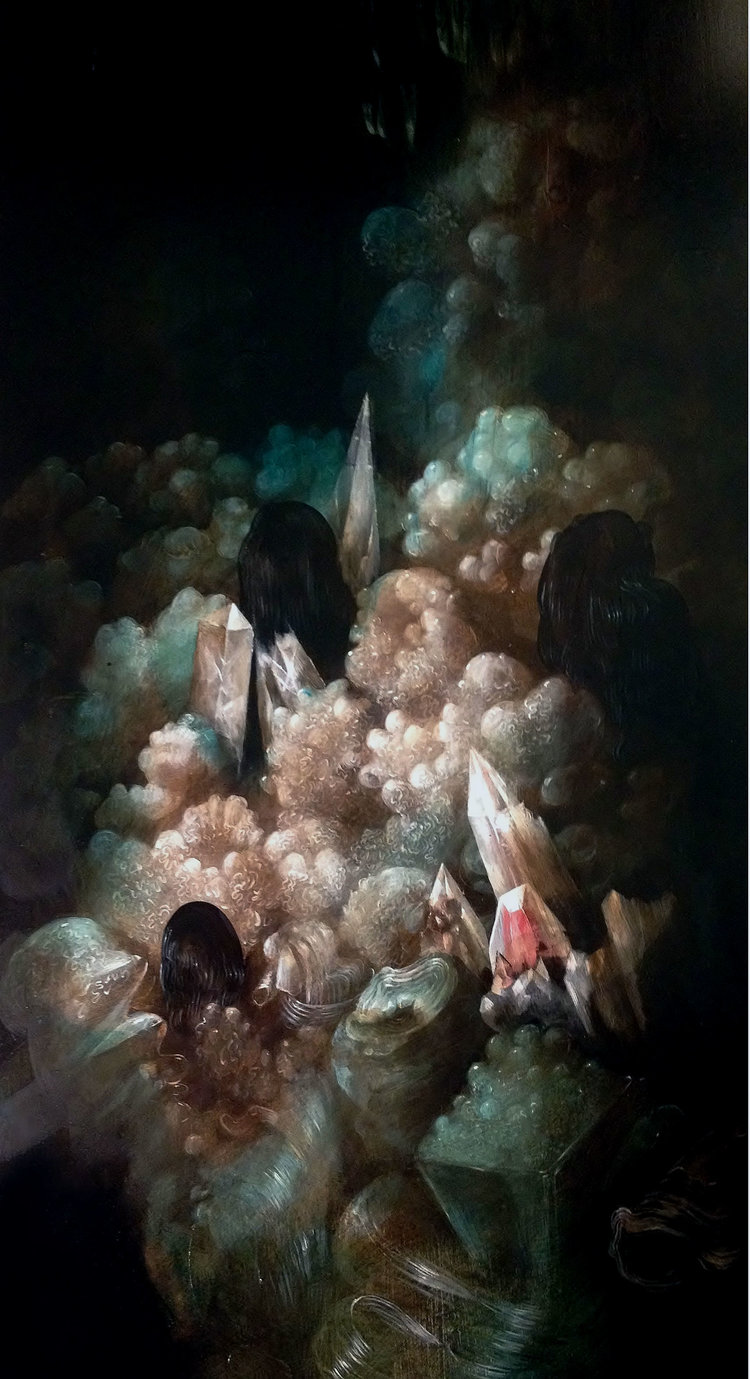
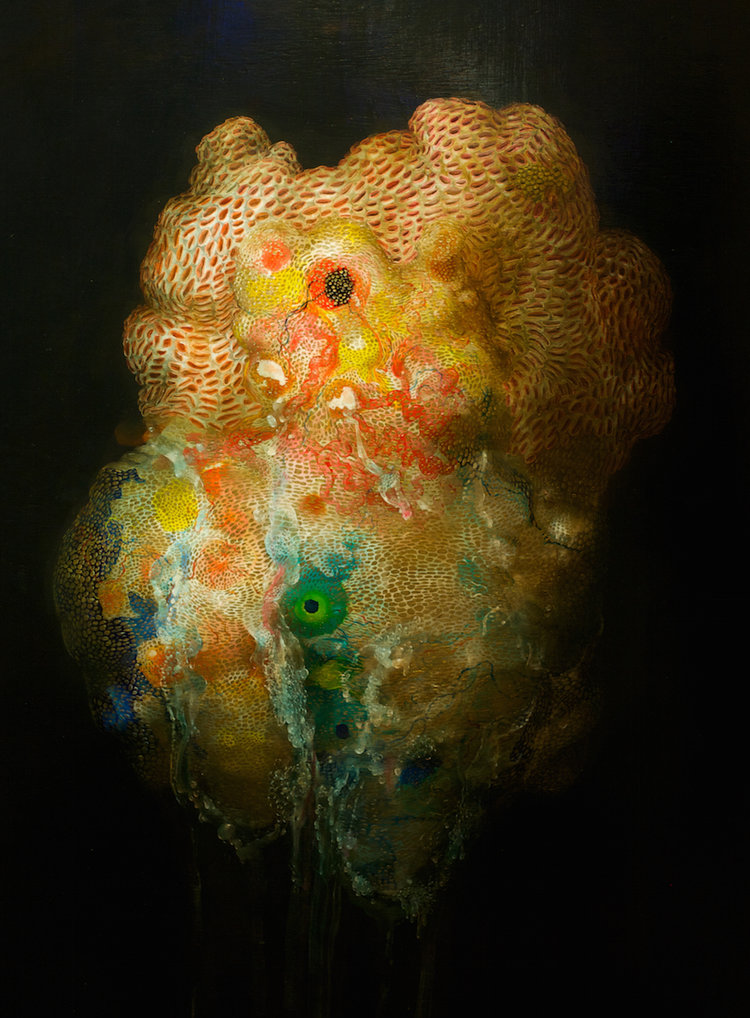
The luscious strangeness of the objects/beings Duennebier depicts, along with her historical influence, composes an incredibly dynamic and scintillating aesthetic universe. Tumorous, malignant, lavish, sumptuous, delicate all at once, vegetable, animal, mineral, undersea, microbial, alien, viscera, carcass, the proliferations of renegade life in Nicole Duennebier’s art are iterations of an invasive, entropic, and unsettling, ever-evolving beauty. The gorgeousness of the cancerous growths of her imagination is limitless. Vaguely sinister, with their alarming encroachment of color, these organic forms are sublime, intricate, and arrestingly unique.
